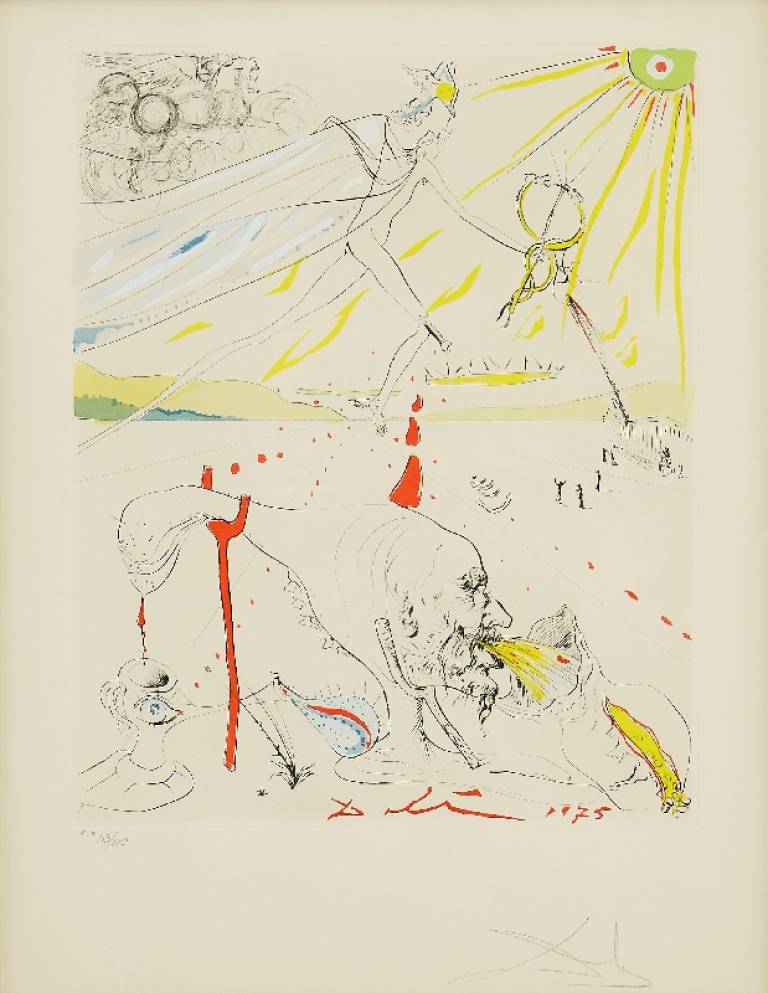Salvador DaliL'Alchemiste - The Alchemist. 1973-75.
- Ref: 615330/019527
Drypoint in black ink extensively overworked in colours with hand and stencil printed gouache-paint. 1970-73. Signed in pencil. Also with the 'paint signature' in red gouache. Inscribed in pencil as 'E.A.' ('Épreuve d'Artiste' - 'Artist Proof')and numbered in pencil from the proof edition of 170. With the Dali blindstamp (see also edition notes below).
Reference: Michler-LDali - Catalogue of his Etchings and Mixed-media no 581.
Provenance: Private Collection, Scandinavia.
Excellent impression with strong etched line and the painted gouache colour brilliantly fresh. On pale cream wove Arches paper. Full margins. Plate: 520 x 420mm.
Salvador Dali is perhaps the most widely recognised of all the artists who formulated the ideas, visual and intellectual, that combined to define that profoundly influential and ground-breaking early 20th century art movement - Surrealism.
Dali first travelled from Spain to Paris in 1928. He met André Breton, the self-appointed 'leader' of Surrealist thought, as well as both Miró and Picasso. By this date Dali was already considered the 'enfant terrible' of the Madrid art world, and it was this revolutionary zeal which immediately linked him to Surrealism. He epitomised the focus on the inspirational force of the subconscious, on the dominance of instinctive feeling rather than rational control of image or expression which was central to Surrealism in the 1920's and 30's, and which continued with a renewed energy in the period in the 1950's to the end of the 1960's when Paris was the avant-garde artistic centre of the world.
'The Alchemist', here is an outstanding example of Dali's art in that final period of his work and of his use of line, imagery and colour in a print medium.
Note: There is some confusion about the editioning of this etching by Dali. The only edition that appears in modern market records is that detailed above, almost all designated as 'E.A.' - artist's proofs. It appears that Dali completed this edition, with the colouring in 1970-73.
The Michler-LDali print oeuvre catalogue also records a large edition just in black, or in black-red, as well as further hand coloured editions on differing papers. These impressions seem never to appear on the market, certainly I have never seen one in more than 50 years. The generally held view is that, although these other editions were agreed to in a contract by Dali, they were never in fact printed.
